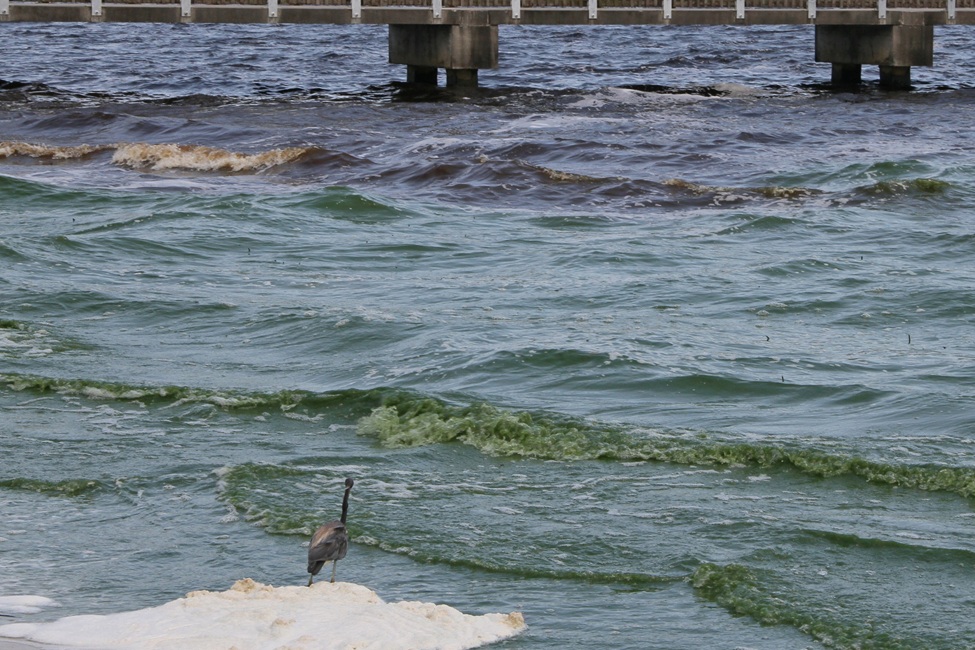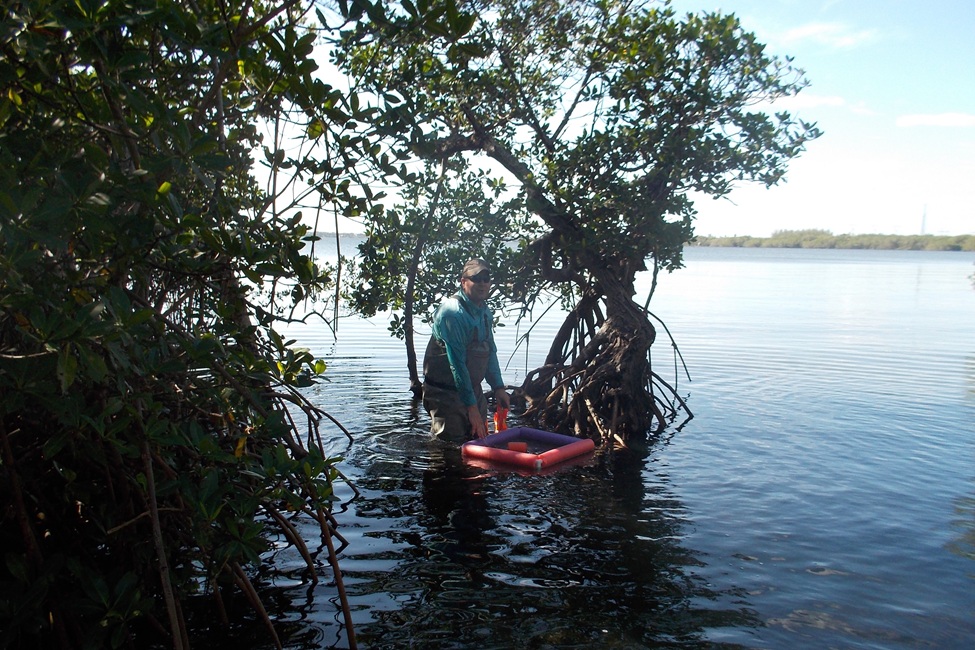By Gisele Galoustian, FAU News Desk
While an abundance of parasites might seem like a bad thing, their absence actually signals trouble in the environment. Parasites are found throughout nature and are part of nearly every major animal group. Many ecosystems with rich wildlife also have a wide variety of parasites, since parasites depend on specific hosts to survive.
When human activities like pollution disturb ecosystems, these host–parasite relationships can break down. Because some parasites need several different hosts to complete their life cycles, their presence can tell us a lot about the health and complexity of an ecosystem.

In the 1970s, the Indian River Lagoon (IRL) was considered one of Florida’s cleanest coastal lagoons. Today, the IRL, which spans 156 miles along Florida’s east coast, suffers from frequent harmful algae blooms (HABs) caused by excess nutrients from farms, septic systems and urban areas. These blooms have severely reduced seagrass beds – vital habitats for fish and invertebrates – which still haven’t recovered.
As such, researchers from Florida Atlantic University’s Harbor Branch Oceanographic Institute and Charles E. Schmidt College of Science and from Florida Oceanographic Society suspected that parasite levels in the IRL would be affected by these environmental changes. Despite a few records, no long-term parasite datasets exist for the IRL. To help fill that gap, researchers used a meta-analysis approach – comparing their findings with global data from similar species and ecosystems.
Results of the study, published in the journal Estuaries and Coasts, found that parasites were less common in the IRL compared to other coastal and estuarine ecosystems around the world. In fact, the proportion of infected hosts in the IRL was about 11% lower than what is typically observed in similar environments.
More importantly, researchers saw an even bigger drop – about 17% – in the prevalence of larval-stage parasites that rely on multiple hosts to complete their life cycles. These types of parasites often depend on a stable and complex food web, moving from prey to predator as they develop. The fact that they’re much less common in the IRL suggests the local food web may be simplified or disrupted, likely due to environmental stressors like pollution, habitat loss and recurring algae blooms. This reduced complexity could mean fewer interactions between species and a less resilient ecosystem overall.
“The Indian River Lagoon is mostly surrounded by suburban development, but our parasite findings suggest its food web looks more like those found in heavily urbanized areas,” said Christopher Moore, Ph.D., senior author and postdoctoral researcher at the University of Florida, who conducted the study as a postdoctoral fellow at FAU Harbor Branch. “Water quality problems and patchy seagrass cover likely limit how freely host species can move, which in turn reduces parasite presence and signals a simpler, more fragile ecosystem. As restoration continues, our parasite data can serve as a useful baseline to track how the lagoon’s food web recovers after years of nutrient pollution and habitat decline.”

From October 2022 to October 2023, researchers sampled six sites in the central and southern IRL, focusing on areas where seagrass was starting to regrow after a 2019 algae bloom die-off. They collected and dissected fish and crustaceans, recording parasites with complex life cycles – like nematodes, tapeworms, flukes and parasitic isopods. They used both visual ID and DNA barcoding to identify the parasites, and compared their results with other studies to see how the IRL measures up in terms of parasite presence and abundance.
Crustaceans and fish in the IRL had lower parasite infection rates than similar species in other ecosystems – 11% lower in crustaceans and 8% lower in fish. Fewer parasites also used these animals as final hosts – 5% less for crustaceans and 11% less for fish. While small intertidal fish typically host more parasites than crustaceans in other systems, the IRL showed no such difference. Overall, parasite prevalence in the IRL was 34% lower, with the biggest decline in digenetic trematodes (15%), isopods (20%) and nematodes (9%).
“These results highlight a striking shift in the ecological health of the Indian River Lagoon,” said Michael McCoy, Ph.D., co-author and a professor at FAU’s Harbor Branch and Charles E. Schmidt College of Science. “The significantly lower parasite prevalence – especially among trematodes, isopods and nematodes – suggests a disruption in the biodiversity needed to support the parasites’ complex life cycles. Parasites are often invisible indicators of ecosystem integrity, and here, their scarcity is telling us something important.”
Parasites with identifiable larval stages, like tapeworms (cestodes), thorny-headed worms (acantocephalans) and flukes (trematodes), were also much less common than expected. No larval tapeworms or acanthocephalans were found in the crabs, suggesting these complex parasites are largely absent in the lagoon. Though only crabs were studied, this points to a general lack of these parasites in the area.
“Just like Washington state’s Puget Sound – a complex estuarine system of interconnected marine waterways and basins – our parasite data suggest that food webs in the Indian River Lagoon are being disrupted, largely due to seagrass loss,” said Moore. “These disruptions have led to declines in meso-predators like sea trout, whose numbers dropped sharply after harmful algal blooms first appeared in 2011. These blooms, driven by excess nutrients, damage seagrass habitats and upset the balance of predators and prey in the ecosystem.”
Study co-author is Krista McCoy, Ph.D., director of research and conservation at the Florida Oceanographic Society.
This research was supported by the Harbor Branch Oceanographic Institute Specialty License Plate fund (PWD #AWD-002997).
This piece was originally published at https://www.fau.edu/newsdesk/articles/parasites-study-lagoon.php. Banner photo: An aerial view of the Indian River Lagoon (U.S. Fish and Wildlife Service, Public domain, via Wikimedia Commons).
Sign up for The Invading Sea newsletter by visiting here. To support The Invading Sea, click here to make a donation. If you are interested in submitting an opinion piece to The Invading Sea, email Editor Nathan Crabbe at nc*****@*au.edu. To learn more about harmful algal blooms, watch the video below.



